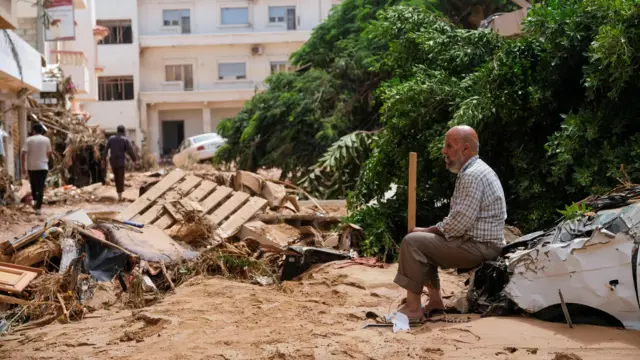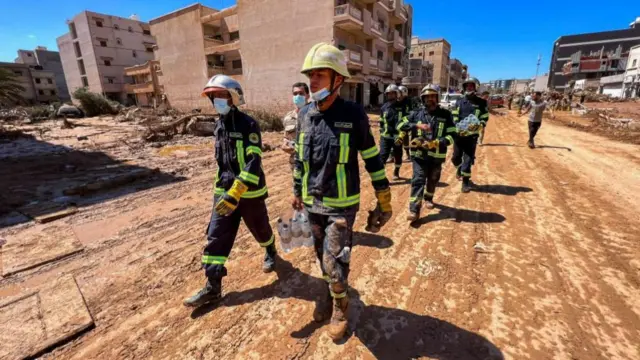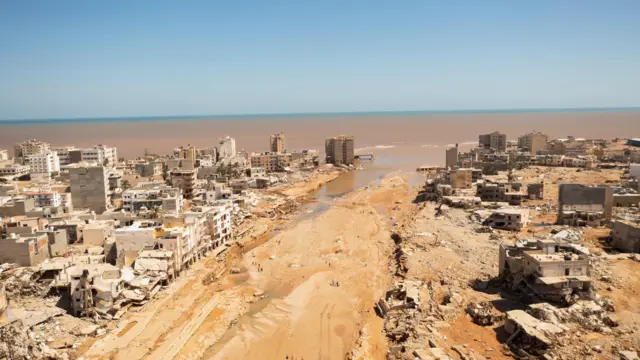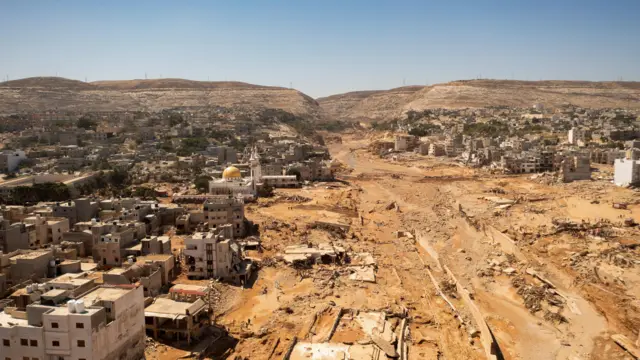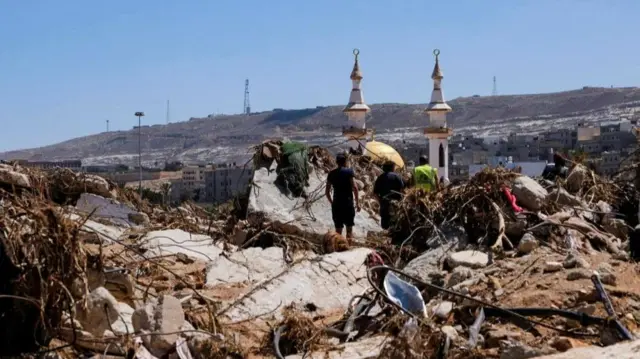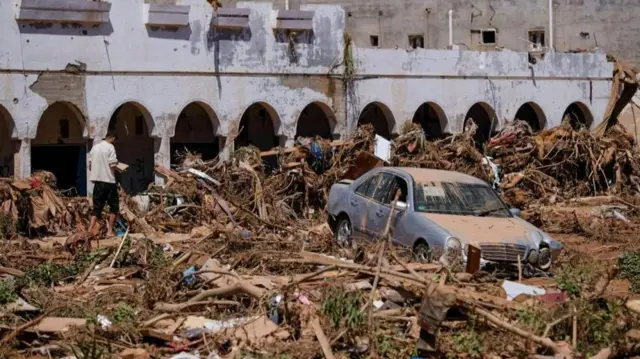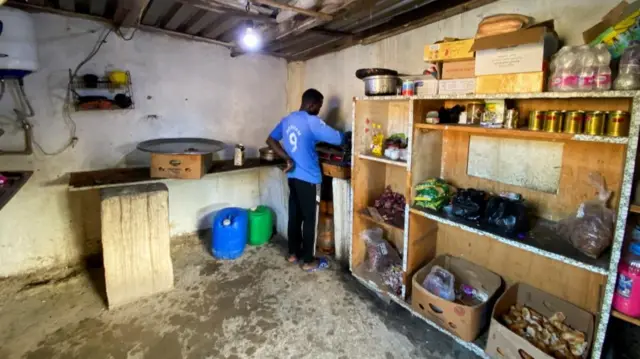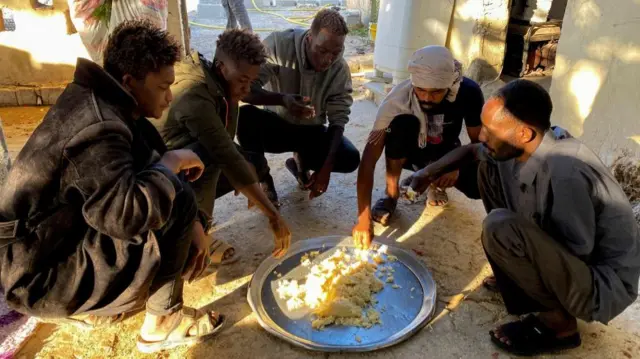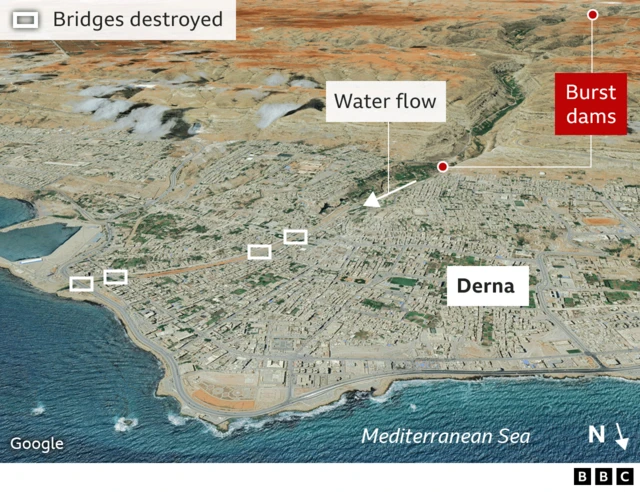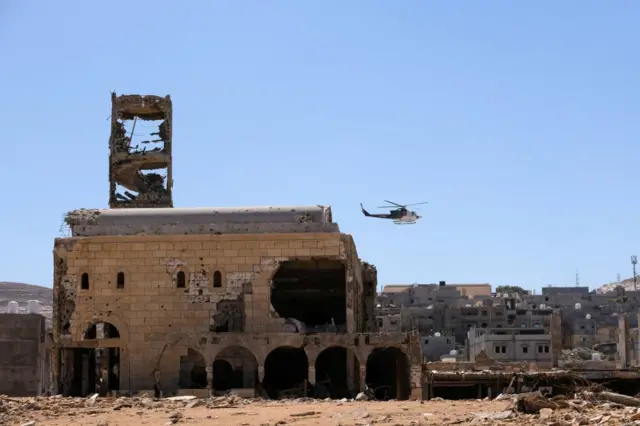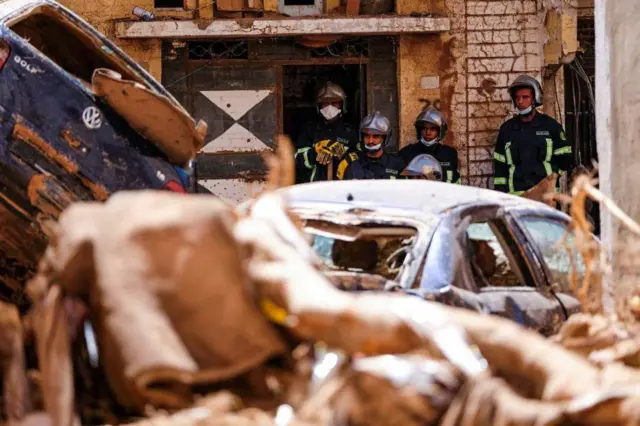'When we went outside, there was no more city'published at 13:51 BST 14 September 2023
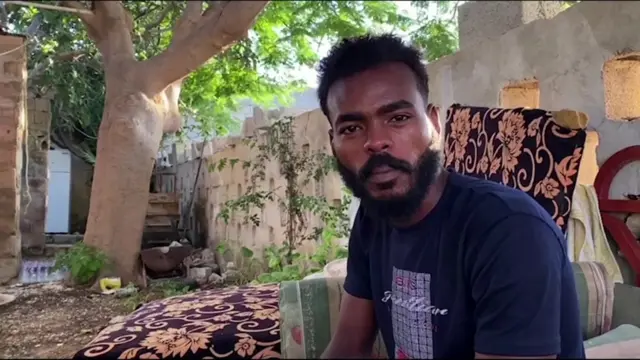 Image source, Reuters
Image source, ReutersBrick factory worker Wali Eddin Mohamed remembers hearing the sound of the dam near Derna collapsing in the middle of the night.
“We woke up at around 03.00 or 03:30 in the morning, we heard a large bang, anyone who was awake in Derna for sure must have heard it," he told Reuters.
"The water was unbelievable, everybody could hear it. When we went outside there was no more city, it had been razed to the ground," he said.
"We woke up and couldn’t find anyone, we couldn’t find anyone we knew. May God have mercy on their souls in heaven.”
